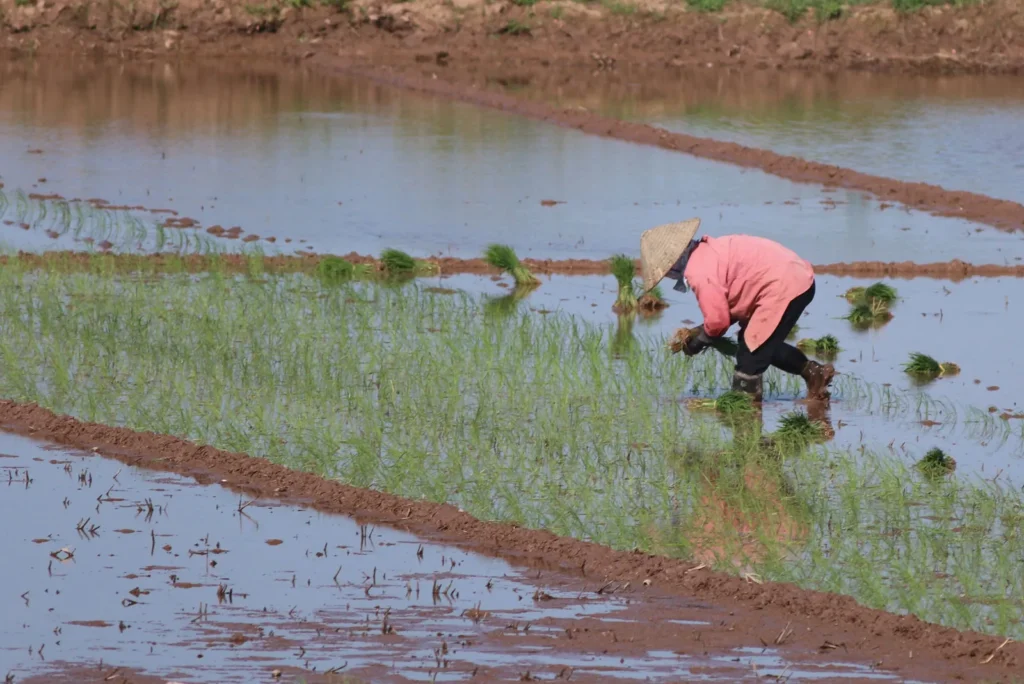Food & Climate
Southeast Asia’s farming labor numbers are dropping mostly due to the older generation retiring and the younger generation not being interested in the sector, according to Elyssa Kaur Ludher, the Visiting Fellow with the Climate Change in Southeast Asia Programme, ISEAS – Yusof Ishak Institute, in an article, that seen by “Food & Climate” platform.
The expert offers some solutions to the declining number of agricultural workers in Southeast Asia.
She said: Southeast Asia is facing a looming crisis. It is losing its farmers faster than it can improve its agricultural productivity, which has serious consequences for food security. But returning migrant agricultural workers, full of overseas farming experience, can potentially relieve the region of this anxiety.
Southeast Asia’s farming labor are being pressed by factors such as yield reduction from environmental pressures, volatile commodity prices, rising input costs, limited access to credit and insurance, and many others.
This is causing would-be farmers to move overseas for better wages. Southeast Asia is the origin of 8 per cent of the world’s migrants. They mainly hail from rural areas of Cambodia, Indonesia, Myanmar, the Philippines, Thailand, and Vietnam. They work primarily in agriculture, construction, manufacturing, and shipping. For example, 32,500 out of the 222,500 farm workers in South Korea in 2021 were from Cambodia.
Southeast Asia’s farming labor may be extinct
The scale of those working overseas is quite large. These migrants contribute significantly to the GDPs of their own countries. For example, transfers to the Philippines are equivalent to approximately 9 per cent of its GDP (US$39.1 billion in 2023.
The number of Southeast Asians moving overseas is expected to continue to rise due to host nations’ acute labor needs, and more competitive and stable wages.
Due to these factors and others, in just over 20 years, Southeast Asia’s farming labor has seen a rapid reduction. This proportion has halved in Vietnam, Cambodia, and Thailand. Indonesia’s Ministry of National Development Planning has predicted that, without action, the Indonesian farmer may be extinct by 2063.

This crisis coincides with Southeast Asia’s increasing exposure to climate change-induced extreme weather, sea level rise and saline intrusion, drought and floods, which will impact agriculture and food significantly. Arable land in Southeast Asia is expected to decline by as early as 2028 as a result of climate change. Production, too, is expected to drop — rice yields are projected to decrease by as much as 40 per cent by 2100 under future climate conditions.
Returning migrants
Returning migrants can be powerful agents of change, improving food resilience at home in the face of climate change.
The migration of able-bodied farmers leaving flagging farms behind is contributing to Southeast Asia’s looming food insecurity.
Yet, this challenge can also be turned into an opportunity. It requires home nations to shift their perspective of seeing farmers moving overseas as a loss to a potential solution — that they can, on return, contribute to their countries’ food resilience in the face of climate change. Governments could recognise that returning migrants can pick up modern and effective farming skills and apply these at home. Activating and leveraging these agricultural resources require proactive action by governments to ensure that they do, indeed, return as skilled agricultural talent and not just remain as low-skilled laborers.

Home nations can work bilaterally, or potentially multilaterally, through ASEAN or the International Labor Organization (ILO), to encourage host nations to extend climate-resilient farming training such as the use of climate-resilient seeds, soil health management, crop rotation, and smart agricultural methods such as efficient irrigation, sensor-based input management, and automation to these workers. Language compatibility, time, and financial resources will be challenges, but employers and workers who think long-term and see value could be convinced to invest in this. Incentives may also improve participation, according to “Fulcrum”.

